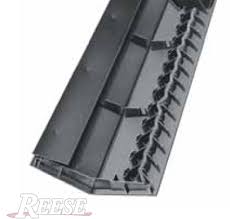Pool Inside Pole Barn
Reader DOUG in SNOHOMISH writes:
“I am just starting the process of having an inground swimming pool installed but due to weather and TREES in my area I have decided to build a Pole Barn to enclose the entire pool. I have done a lot of research on Pools and Pole Barns over the past 2+ years before coming to this conclusion. With advice from you and a ex-framer brother I feel that this is the right direction based on cost and complexity level.
What I am missing is real details and examples of individuals that have done similar projects. I could ask a million questions and spend days just chatting to you and/or other experts but it is unlikely I would be allowed. ☹ I have been searching the web for examples with more details on the different phases of the construction such as (1) Insulation, (2) Framing Walls, (3) Drywall, (4) Ceiling, (5) HVAC D, (6) Electricial, (7) ETC… but have not found much. Is there any good information on such projects being undertaken by experienced DIY individuals? (I know what you are thinking DIY = Don’t Indulge Yourself, but in this case I really am an Experienced DIY, having BUILT my own 4700sf home including either GC or hands on.
 I am really considering using a Hansen Pole Barn Kit for the shell, but need to figure out how to ensure 60% humidity inside the building doesn’t rot it from the inside out. I know that HVAC Dehumidification will be very import, but so is how to seal the build walls from both the outside and inside, how to insulate the walls and ceiling (especially since we plan to have a flat ceiling thus an attic area where the Ceiling and Roof may need to both be insulated to avoid condensation, etc.
I am really considering using a Hansen Pole Barn Kit for the shell, but need to figure out how to ensure 60% humidity inside the building doesn’t rot it from the inside out. I know that HVAC Dehumidification will be very import, but so is how to seal the build walls from both the outside and inside, how to insulate the walls and ceiling (especially since we plan to have a flat ceiling thus an attic area where the Ceiling and Roof may need to both be insulated to avoid condensation, etc.
Any advice and especially great examples with details would be appreciated.”
Mike the Pole Barn Guru says:
It has been several years since we provided one of our buildings over a pool. Here is an article I wrote as a result of it and a more recent inquiry: https://www.hansenpolebuildings.com/2019/08/post-frame-indoor-swimming-pool-considerations/
Obviously your key to success is having a great HVAC/R system.
I do try to always err on caution’s side.
Adding to my referenced article above – I would add using all rock wool insulation as it is unaffected by moisture. Have a Weather Resistant Barrier between framing and wall steel (allows water vapor to exit the wall). Consider finishing the interior with cement board over a well-sealed vapor barrier, rather than “green board” moisture resistant drywall. Cement board is comparable in weight to drywall, so will not require adding to structural capacity beyond what sheetrock would take. Have a well ventilated attic (eave and ridge).
You will want to seal the interior – walls and ceiling, while having the exterior able to allow any moisture to escape.
Electrical is outside of my wheelhouse, otherwise you should be “good to go”.









